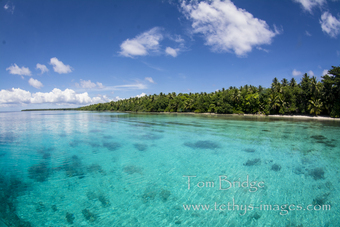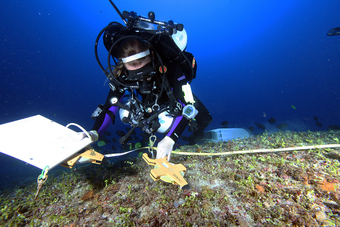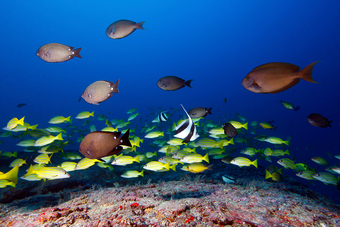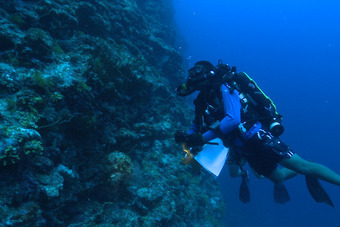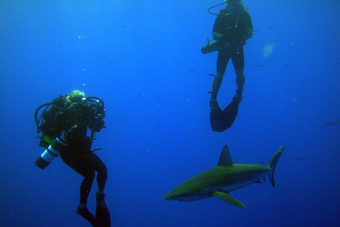Publications:
Bridge et al. 2016
Ecological communities that occupy similar habitats may exhibit functional convergence despite significant geographical distances and taxonomic dissimilarity. On coral reefs, steep gradients in key environmental variables (e.g. light and wave energy) restrict some species to shallow depths. We show that depth-generalist reef fishes are correlated with two species-level traits: caudal fin aspect ratio and diet. Fishes with high aspect ratio (lunate) caudal fins produce weaker vortices in the water column while swimming, and we propose that ‘silent swimming’ reduces the likelihood of detection and provides an advantage on deeper reefs with lower light irradiance and water motion. Significant differences in depth preference among trophic guilds reflect variations in the availability of different food sources along a depth gradient. The significance of these two traits across three geographically and taxonomically distinct assemblages suggests that deep-water habitats exert a strong environmental filter on coral reef-fish assemblages.
0- 50 m
Mesophotic “mentions”
28 x (total of 4575 words)
Classification
* Presents original data
* Focused on 'mesophotic' depth range
* Focused on 'mesophotic coral ecosystem'
Fields
Ecology
Community structure
Connectivity
Focusgroups
Fishes
Locations
Puerto Rico
USA - Hawaii
Micronesia - Caroline Islands (Pohnpei)


